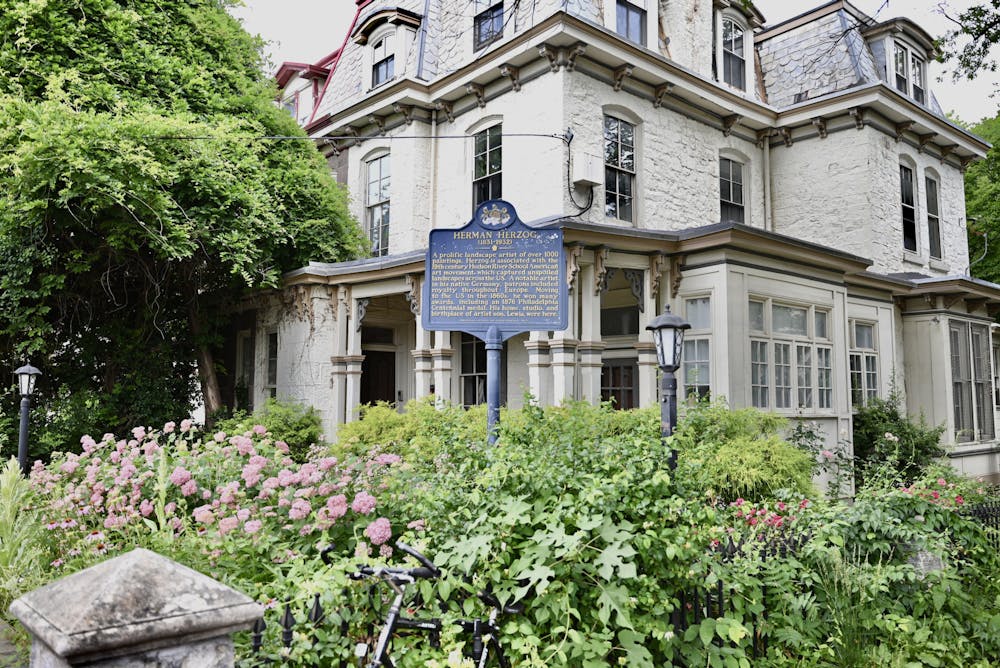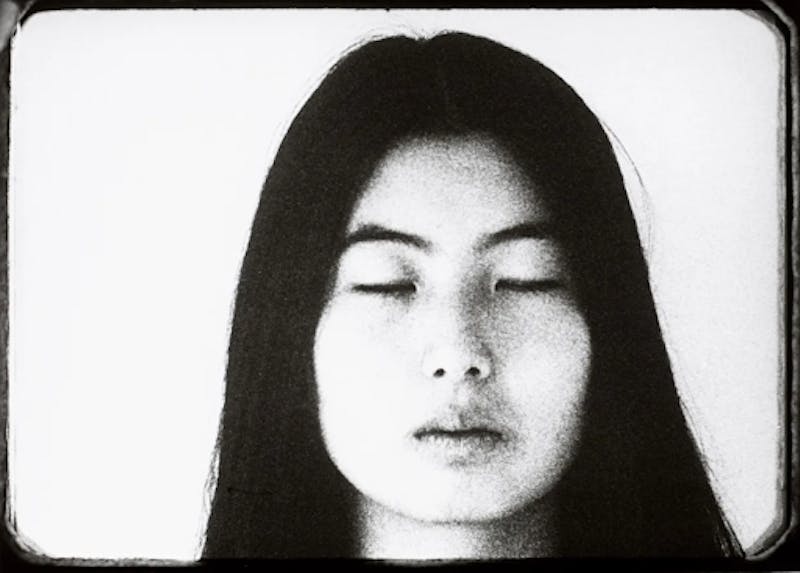This is no ordinary house.
Walking down the shadowy hallway, you pass items that seem pulled from a cold, industrial future. A dismantled drawer full of shoes and various mechanical tools. A metallic skateboard. Hangers of outerwear under sharp fluorescent lighting. Banks of dark pebbles encroach on either side, forming an increasingly narrow path around your feet. Then, in a startling swell of space and light, you enter the bedroom.
Airy white fabric and bursts of greenery fill your vision: a small tree leaning over the foot of the bed, fronds slicing up sunlight from the window, vines trailing down a three–tiered glass cabinet that holds jewelry and camera lenses. A white keyboard sits against one wall, while a nook in one corner contains a tea–making apparatus and a spiral bookcase.
After the narrow hallway, stepping into the room feels like exhaling. The effect is intentional: “It’s constriction and expansion,” Jonathan Song (C ‘24) says.
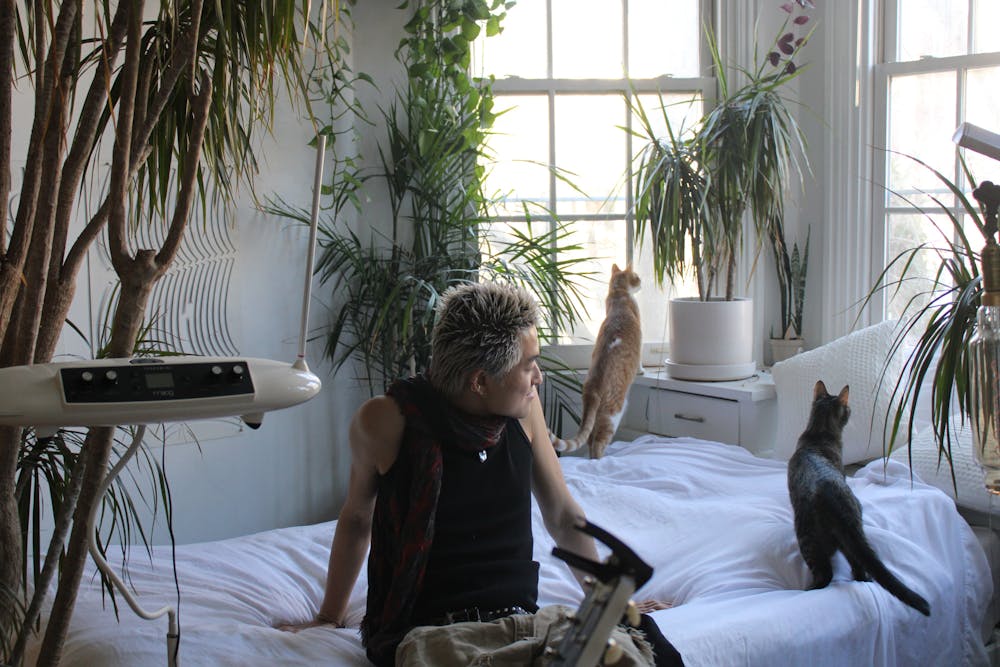
He explains that the idea came from the architect Frank Lloyd Wright, who built tight spaces leading into large rooms to create a sense of freedom as guests pass through. Jonathan’s hallway—designed in the aesthetic of a commodified, mechanical world—is compression, while the bedroom is release.
“I want people to expand back into nature, back into a forest, back into tea, you know, sitting on the ground … like a simplicity that makes you feel a release,” he says.
Jonathan is an animated speaker, constantly rephrasing his own sentences and pausing to find the right word to capture his freewheeling thoughts. After a moment, he adds that the room can also serve as a reflection of his identity. “[The hallway] is my exterior shell, and this”—gesturing to the space around him—“is the heart of who I am.”
Jonathan is one of ten students living in the “Herzog Collective,” a historic West Philadelphia mansion named for the 19th–century artist Herman Herzog, who lived and worked there for over 60 years. It’s no wonder that Jonathan feels such a strong personal connection to the space: He was the key figure who established the Herzog Collective in 2022. Since then, he has devoted countless hours to envisioning and building the house’s identity as a safe space for alternative communities and artistic expression.
Stepping into the house for the first time feels a bit like entering an alternate universe. The space overflows with art in all of its forms, from paintings on the walls to music playing from speakers in nearly every room. Like in Jonathan’s room, the entire house is filled with potted ferns, vines, and succulents.
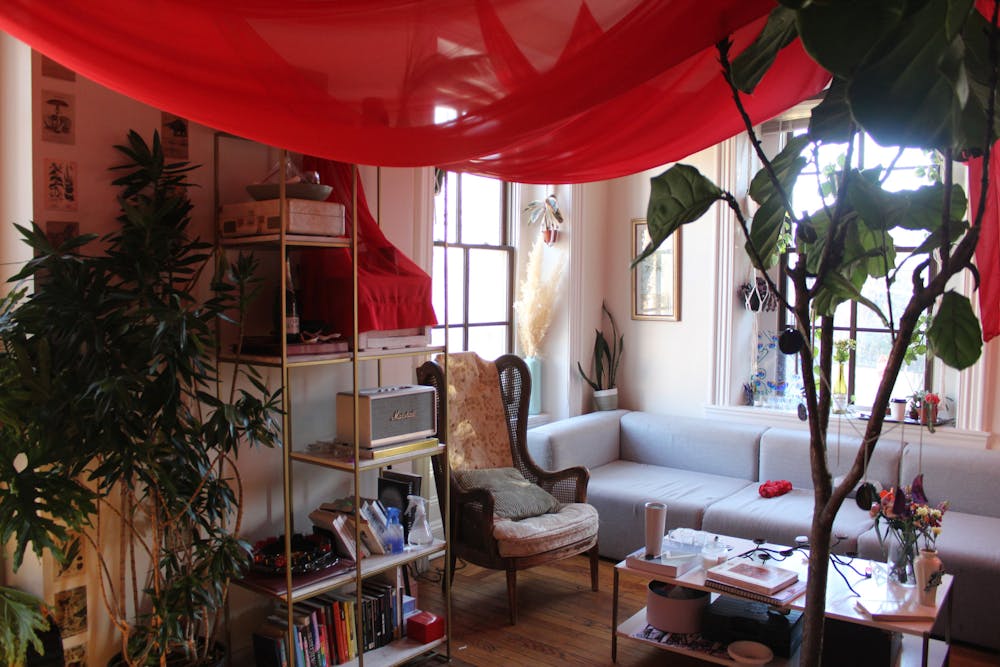
The house’s abundance is as multifaceted as Jonathan himself. His work lies at a unique intersection of his architecture and physics majors and an English minor. What he calls his “toolbox” of artistic skills ranges from painting and photography to musical composition and creative writing. As Jonathan prepares to leave Penn, the house is a living testament to his evolution, inner turmoil, and aspirations as an artist.
Emerging from his first year at Penn, Jonathan struggled with disillusionment from being immersed in Penn’s pre–professional culture and social hierarchy. “It’s just a process of your idealism suddenly confronted with the reality of the world, and you see it slowly die, and so we conform,” he says. “And that idealism, I think initially for a lot of people, is to change the world for the better.”
When the COVID–19 pandemic hit, he took a gap year that reoriented him toward architecture and physics as areas of study. The idea for the Herzog Collective began when Jonathan visited a student commune in Berkeley, Calif. that transformed the way he thought about art and community. “Standing there, it was the physical manifestation of another possibility for us to arrange ourselves,” he recalls.
Jonathan returned with the goal of turning this possibility into a reality at Penn. He made passionate speeches about his vision for the collective to several student organizations. Eventually, he gathered four friends willing to go all in on the project. They signed the lease on Herzog’s mansion the day after the property opened up. The availability was a “godsend,” he emphasizes, given the competitive real estate market around Penn’s campus.
That was just the beginning. According to Jonathan, the Herzog Collective experienced a difficult first few months of stress and internal conflict. Each resident had a different idea of what the collective was meant to achieve, and agreeing to the same contract was a challenge. At times, Jonathan recalls, the turmoil made him doubt the house’s rationale as a whole.
“How do I describe to you the feeling—my feeling of how this is a momentous undertaking, you know, a titanic undertaking for me to change the world,” he says. “So it felt at the time that if this project failed, that means the world can’t be changed.”
Yet the group weathered through its disagreements, and in October 2022, the house held its first major event. The party, called the “Transcendence Carnival,” featured activities such as piano performances, photography exhibitions, and tattoo sessions. It was free and open to the public. Jonathan says this was a deliberate effort to “tilt the culture of exclusivity upside down,” in contrast to the selectivity of Penn’s greek life. He describes the party as a pivotal moment in changing how its residents thought about the project.
In December 2023, the Herzog Collective hosted its second major party, “Festival Universality.” Partygoers wandering through the house could listen to a “Jazz Prelude” on the first floor, watch student performances on the second, and introspect in an observatory on the third. “For the voices singing music, hearts beating to rhythm, and souls yearning for connection,” the event poster beckoned.
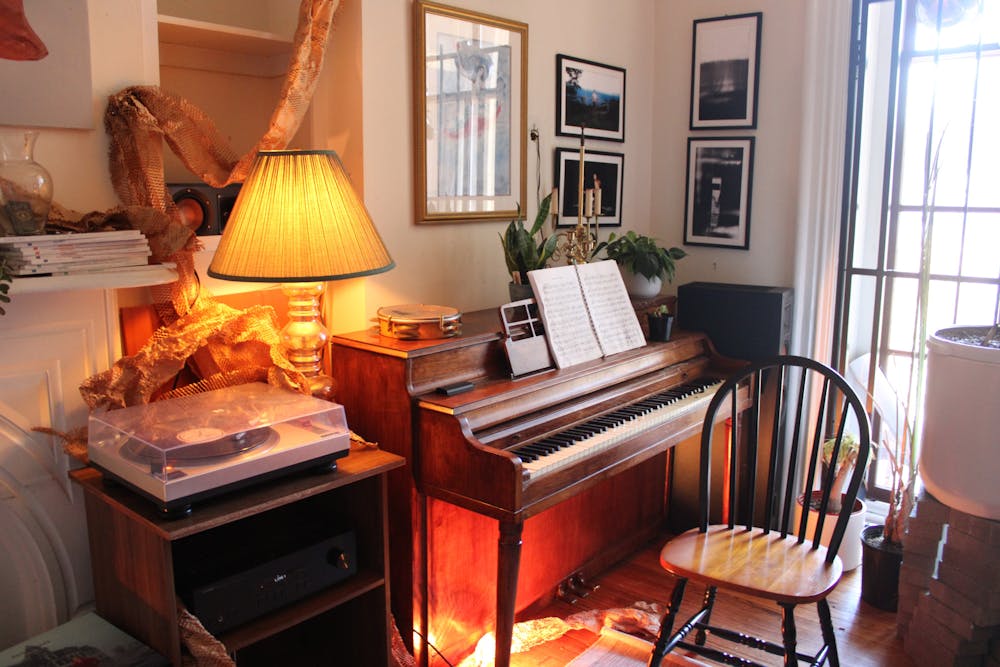
As much as the house seeks to create a safe haven for artists, its members also have to reckon with the everyday financial reality of maintaining an 11–bedroom residence. After all, even the most transcendent celebration must be balanced with the mundanity of chores, midterms, and grocery shopping.
“Some days we get tired; we have exams. We’re just people. Not everyone is drinking tea together all the time,” Jonathan acknowledges.
In its first year, the collective settled on a pay–what–you–can system for residents in order to make the house financially accessible for anyone who wanted to live there. Each resident contributes what they are able to, whether that’s $700 or $2,200, in order to make rent. Aligning with the collective’s emphasis on transparency, the house’s finances are openly displayed on posters in the entryway. As house treasurer, Jonathan was responsible for managing the Herzog Cooperative Fund and ensuring that the project was economically feasible. Other house roles include kitchen director, steward of maintenance, botanist, and scenter (the resident who ensures that Herzog smells good every day).
“These are important financial and social contracts everyone needs to agree with in order to make this communal living space almost an anti–nuclear family kind of structure, pleasant enough to prefer over living by yourself,” Jonathan says.
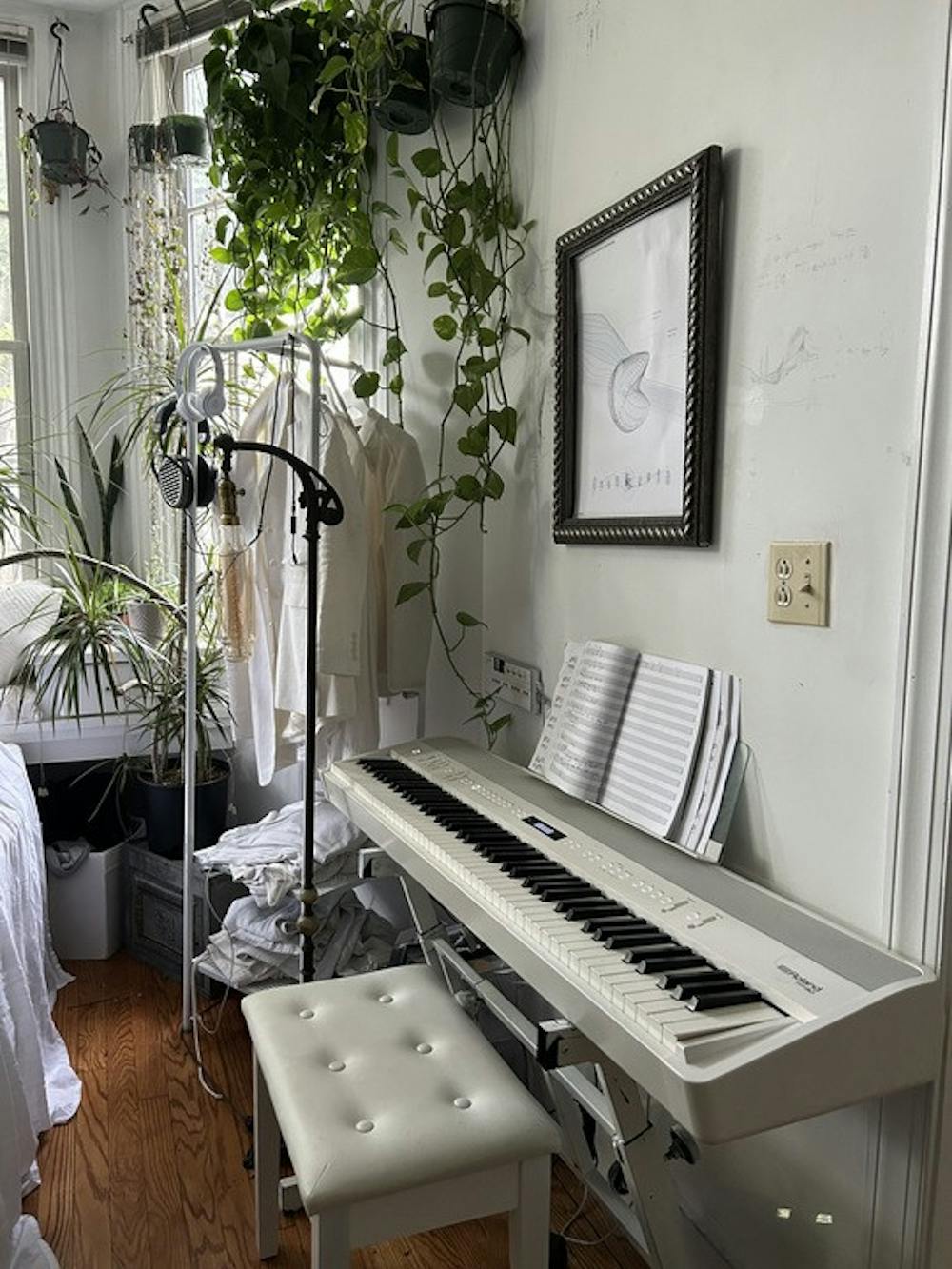
The financial aspect brings in another complication, one at the heart of the house’s identity. Jonathan has struggled intensely with how to define the Herzog Collective given its proximity to an Ivy League institution, simultaneously reaching for and shying away from the idea of “utopia.” He acknowledges the criticism one could leverage at Penn students who choose to pursue an alternative housing project, when those resources could go to supporting less privileged communities. “Someone has the right to call this entire thing a bourgeois project,” he says. “You know, you’re turning money into pleasure dust when you could be turning it into food and bread.”
He is still confronting the contradiction between the house’s central purpose and the socioeconomic context in which it exists. But he has come to believe that the project does have value in staking out a different possibility of living within the “mainstream culture” at Penn. “I think that has value in affecting brilliant minds in this school at their most plastic time of potential,” he says.
As Jonathan explains other projects he has completed at Penn, it is clear how deeply entwined his own artistic identity is with his physical surroundings. A glance around his bedroom reveals a blueprint of a city bench inspired by a seashell, a floating stage that rotates with the water levels of the Schuylkill River, and a graph mapping the Herzog Collective in relation to other schools of thought such as the Frankfurt School and “Pennism.”
At one point, Jonathan unfurls a huge piece of black paper across the bed and begins explaining his theory for a new way of conceptualizing jazz music, which uses astrophysics instead of sheet music. Star qualities such as luminosity and supernova type determine the structure, volume, and timing of piano chords.
While the graph might seem like the final project for a class, it was entirely self–motivated, a synthesis of his own making from astrophysics and jazz classes he was taking at the time. Jonathan thought of the idea in one night, created the graph the next day, and printed it during finals season. While he admits that the impulsive project may have been “foolish,” the graph also taps into his love of how architecture can transform complex ideas into elegant design.
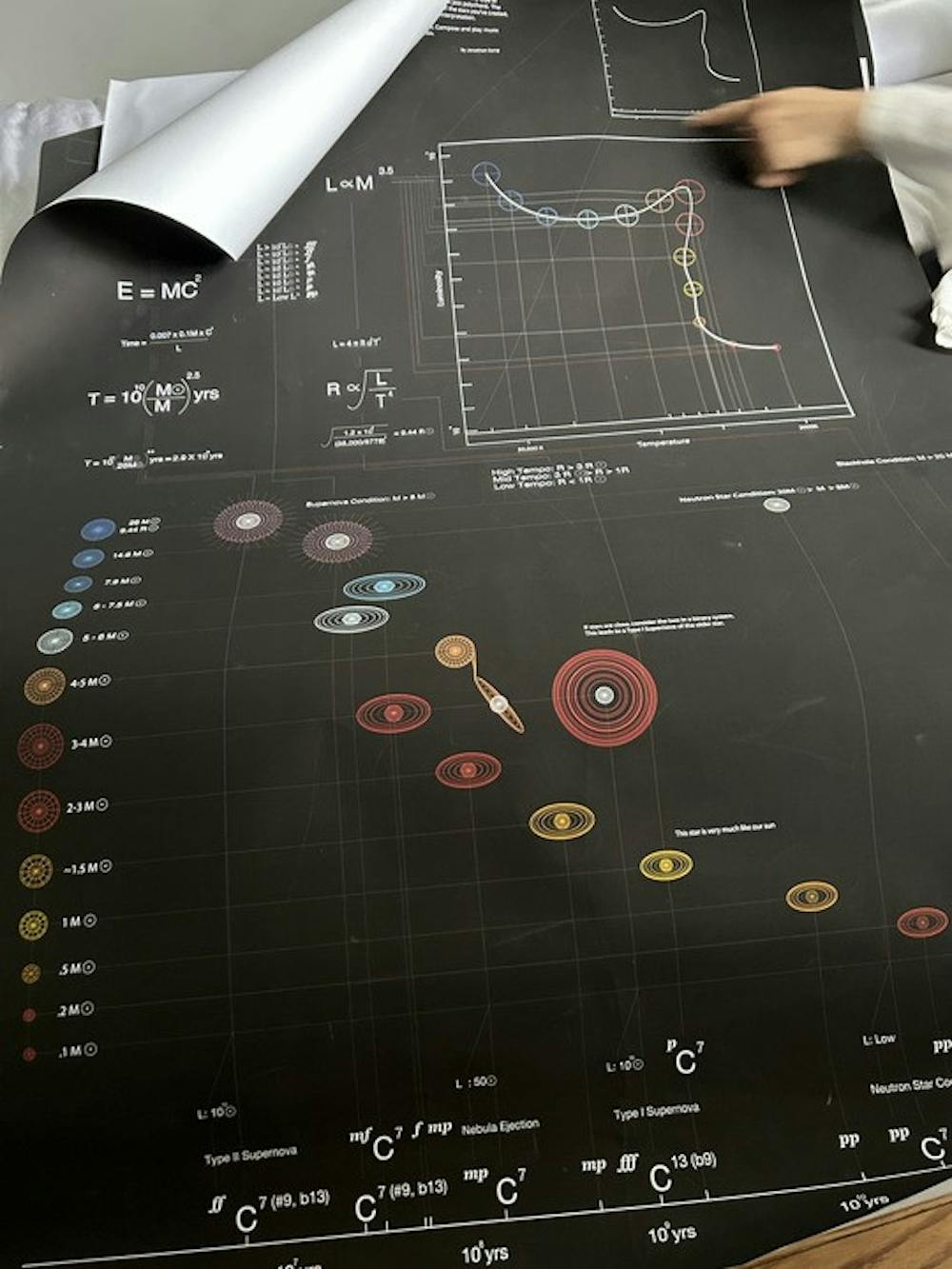
“Seeing information as it’s presented, you suddenly understand that there’s circuitry and intentionality in how I process information. And you can accept my conclusions with more confidence,” he says. “That’s essentially the power of architecture. It’s a medium to communicate.”
That description may well serve as a metaphor for Jonathan’s relationship to the Herzog Collective. In a sense, the house is a physical manifestation of years spent engaging with art, architecture, philosophy, and literature. It’s the ultimate example of complex ideas distilled into a beautiful model. “I don’t know if [the house] is art,” he reflects. “But I think if you’re an artist—your work will show your intellectual process. Your art will communicate in a way that words can’t.”
Jonathan recently completed a website where curious students can explore the structure of the Herzog Collective and view rooms for themselves. The website is one way that the project will live on after Jonathan graduates. Its vision will evolve as other students step up to lead, and he accepts this change as an inevitable part of the group’s growth. Yet as Jonathan departs from Penn, he hopes above all that the collective remains true to its founding values of inclusivity and artistry—a possibility for a different way of living.
“I wish that it doesn’t become an institution that is consumed,” he says. “My hope is that it can become something new and a beacon of idealism in this school, in this dark, dark place.”
